I have discovered a number of things that you would never guess have a relationship to each other. One trip of Abraham Lincoln on a train leads me to Pigeons and doves and why they were so important to the Ancient Hopewell as a sacrifice to God, which leads me to the pigeons following the pathways of Hopewell Earthworks, to the importance of sacrifice for the Prophet Lehi which then takes us to near Jerusalem to a cave called “Biet Lehi” that resembles the pigeon caves in Ohio. Throw in there a bomb-grade uranium enrichment plant, and the underground railroad. Don’t forget about the Hopewell “Great Circle”, Adena Man and the many birdstones of Ohio either. Let’s tie it all together and see how doves and pigeons were such an important part of the Nephites and the Law of Moses.
Sargents Station Historic District
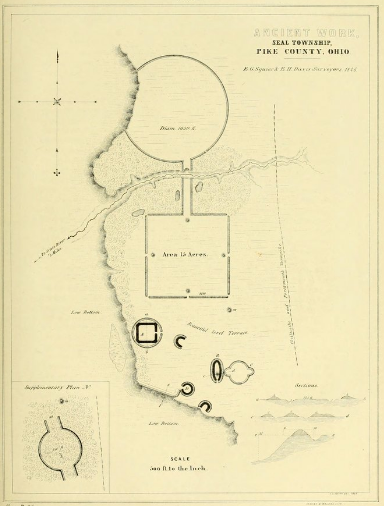


Other sites include the Sargents Railway Station; the Hughes Home and Mound; the Rittenour Home, the Sargents Methodist Episcopal Church; Bailey Chapel (in Wakefield); the Vulgamore, Barnes, Van Meter, and Wakefield Mounds; the Barnes Graveyard; and the Gaseous Diffusion Plant.
Ancient Monuments and Pigeons
Ephraim George Squire and Edwin H. Davis visited the Barnes house in 1846. They wrote the book, Ancient Monuments of the Mississippi Valley, which was issued in 1848 and distributed to Congress, highlighting the spectacular earthwork complex at Sargents Station. Congressman Abraham Lincoln visits in December, to see the earthworks, giving him direct contact with Ohio Underground Railroad operators. Lincoln then submits his first piece of anti-slavery legislation
The last passenger pigeon ever seen in the wild was shot nearby and exhibited in the home from 1900 to 1915.

The nearby town of Dove, Ohio, was the first location to be named for the Passenger Pigeon in English and was perhaps the largest regular roosting site in North America. (Note: Dove was located on Red Hollow Road where the DT&I railroad crossed.)
“John James Audubon knew birds. As part of what he called his “frenzy” for avians, the French-American naturalist attempted to survey and document in drawings all the native bird species of North America. And it is Audubon who in 1833 identified the passenger pigeon, Ectopistes migratorius, as the most numerous bird on the continent, highlighting the point by describing a mile-wide flock of migrating pigeons that passed over his head and blocked the sun for three straight days.
In fact, the passenger pigeon in the early 1800s may have been the most numerous bird in the world, with an estimated population of at least three billion birds—or at least a third as much as the total population of all kinds of birds in North America today. Yet, by 1900, none survived in the wild.” Scientific American
THE PIGEONS OF PIKETON
Geoffrey Sea recounts another historical event at this house: the famous “Sargents Pigeon”, and what it was like to see the huge, sky-darkening clouds of these birds in pre-modern times, as they gathered and migrated along these huge Teays-age river valleys.
 The very last passenger pigeon seen in the wild was seen by a young boy half a mile south of this house. He didn’t know it was a passenger pigeon, they’d become very rare by the 1890s. He went and got a shotgun and shot the bird. It turns out that was the last passenger pigeon ever sighted. He brought the bird to this house and Blanche Barnes, the woman of the household at the time, was also a taxidermist.
The very last passenger pigeon seen in the wild was seen by a young boy half a mile south of this house. He didn’t know it was a passenger pigeon, they’d become very rare by the 1890s. He went and got a shotgun and shot the bird. It turns out that was the last passenger pigeon ever sighted. He brought the bird to this house and Blanche Barnes, the woman of the household at the time, was also a taxidermist.
The bird was stuffed, and was then displayed in the Barnes Home for many years, and eventually donated to the Ohio Historical Society in Columbus. Passenger pigeons were very important to the ecology of Ancient North America, and were numerous beyond imagination.
Flocks were counted up to two billion birds in a single flock flying together. There’s no other bird that congregates in those kind of numbers. It’s almost unimaginable – the pre-eminent natural phenomenon of this region. They would blot out the sun; it was like experiencing an eclipse. It would have been one of those great markers of the seasons when the birds returned and left.
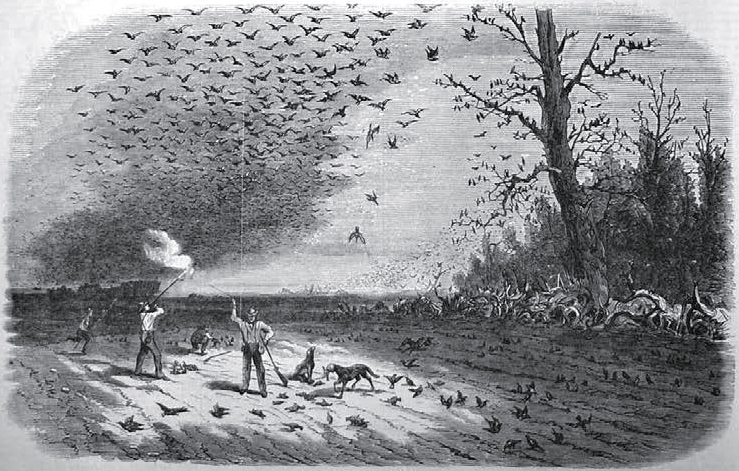
Sea has a theory that there were connections among these sky-darkening throngs of pigeons, traditional Native American beliefs, and the building of the geometric earthworks:
I believe that the big geometric earthworks were essentially built as a guide path for the pigeons. I have found a reference by Francis Parkman quoting one of the Jesuit missionaries in the early seventeenth century, saying that the Hurons and affiliated tribes including the Ojibway, and also the Shawnee, believe that when we die we resurrect as passenger pigeons. They anticipated that they would have to travel to a place in the sky, and in order to get there would need guide paths. So they built these giant earthworks as symbols to guide them on that path.
Dove vs Pigeon: What’s the Difference?
 Can you tell the difference between a dove and a pigeon? The typical image of a dove is that of a white adorable bird with an olive branch in its mouth, a symbol of world peace. But what if I told you that doves can also refer to those ubiquitious rock pigeons that are found throughout Singapore?
Can you tell the difference between a dove and a pigeon? The typical image of a dove is that of a white adorable bird with an olive branch in its mouth, a symbol of world peace. But what if I told you that doves can also refer to those ubiquitious rock pigeons that are found throughout Singapore?
Pigeons and doves belong to the same family of birds (Columbidae), which consists of more than 300 species of birds. They share similar features like thick and round bodies, short necks and thin peaks, but doves are generally of a smaller stature while pigeons are often larger and stubbier. Source
THE TREMPER MOUND
The Tremper Mound and Works in Piketon, OH are a Hopewell (100 BCE to 500 CE) earthen enclosure and large, irregularly shaped mound. The site is located in Scioto County, Ohio, about five miles northwest of Portsmouth, Ohio, on the second terrace floodplain overlooking the Scioto River. It was listed on the National Register of Historic Places in 1972.
The Tremper Works include a large earthen enclosure in the shape of a flattened oval. Measuring 480 feet (150 m) by 407 feet (124 m), the oval was entered through an opening in the southwestern part of the enclosure. At the center of the oval is a large, irregularly shaped mound. Believed by some to be an effigy mound built in the shape of an animal, although there has never been any conclusive proof of this.
The site was surveyed in the 1840s by Charles Whittlesey for E. G. Squier and E. H. Davis, and an engraving was included in their book Ancient Monuments of the Mississippi Valley.[3] The site was excavated by William C. Mills of the Ohio Historical Society in 1915. He discovered numerous postmolds at the base of the mound, revealing the outline of a wooden structure 200 feet (61 m) long by 100 feet (30 m) wide. The pattern showed that there had been a large building with several smaller chambers at its eastern end. http://mobile.ancientohiotrail.org/ls-6.html
Effigy Pipes

Another significant discovery made at Tremper were more than 500 objects that had been deliberately broken and left in one of the eastern chambers. The objects included 136 smoking pipes made of catlinite or pipestone. Ninety were effigy pipes sculpted in the shapes of animals, notably bears, wolves, dogs, beavers, cougars, otters, turtles, cranes, owls, herons, and hawks.[2]
It had been thought that the material used to make the pipes had been quarried from Ohio pipestone outcrops across the Scioto River from Tremper, but new tests have shown that the majority of the pipes were made from Sterling pipestone from northwestern Illinois. Many of the Tremper pipes are on display at the Ohio Historical Center in Columbus, Ohio.[2]
Tremper is best known for its buried collection of 60 effigy smoking pipes, their bowls elegantly carved into the figures of Woodland animals, birds, and humans. Many of these pipes exactly match the collection found at Mound City, 40 miles upstream along the Scioto.
In the form of the pipes we can recognize the faces and paws, the bills and wings of creatures common in Ohio Valley woods and meadows.

Their stone bodies were beautifully formed and meticulously incised. But they were all ritually broken before being buried, to release or to cut their spiritual power.
Distribution and Habitat
Specimen in flying pose, Academy of Natural Sciences of Drexel University
The passenger pigeon was found across most of North America east of the Rocky Mountains, from the Great Plains to the Atlantic coast in the east, to the south of Canada in the north, and the north of Mississippi in the southern United States, coinciding with its primary habitat, the eastern deciduous forests. Within this range, it constantly migrated in search of food and shelter. It is unclear if the birds favored particular trees and terrain, but they were possibly not restricted to one type, as long as their numbers could be supported. It originally bred from the southern parts of eastern and central Canada south to eastern Kansas, Oklahoma, Mississippi, and Georgia in the United States, but the primary breeding range was in southern Ontario and the Great Lakes states south through states north of the Appalachian Mountains. Though the western forests were ecologically similar to those in the east, these were occupied by band-tailed pigeons, which may have kept out the passenger pigeons through competitive exclusion.
The passenger pigeon was an important source of food for the people of North America. The indigenous peoples ate pigeons, and tribes near nesting colonies would sometimes move to live closer to them and eat the juveniles, killing them at night with long poles. Many Native Americans were careful not to disturb the adult pigeons, and instead ate only the juveniles as they were afraid that the adults might desert their nesting grounds; in some tribes, disturbing the adult pigeons was considered a crime. Away from the nests, large nets were used to capture adult pigeons, sometimes up to 800 at a time.

Low-flying pigeons could be killed by throwing sticks or stones. At one site in Oklahoma, the pigeons leaving their roost every morning flew low enough that the Cherokee could throw clubs into their midst, which caused the lead pigeons to try to turn aside and in the process created a blockade that resulted in a large mass of flying, easily hit pigeons. Among the game birds, passenger pigeons were second only to the wild turkey (Meleagris gallopavo) in terms of importance for the Native Americans living in the southeastern United States. The bird’s fat was stored, often in large quantities, and used as butter. https://en.wikipedia.org/wiki/Passenger_pigeon
Pigeons Low-Cost Offering for Sacrifice
HaChayim:
“The Torah tells us that as far as G‑d is concerned, the bird offering is equally esteemed in His eyes. We find support from Isaiah when the prophet describes G‑d as being close ‘to the contrite and lowly in spirit” which our Sages interpret as “I [G‑d] descend from Heaven to be close to the contrite,” or as “I elevate the contrite to my domain”. It is due to such considerations that the name of G‑d is written next to the bird offering and not next to those offerings of animals. All who offer a burnt-offering of a bird is presumed to be in low spirits since he cannot afford something of greater value to G‑d. So too with a meal offering that a poor person who cannot afford to offer more is offering his whole life-soul to G‑d by means of such a low cost offering.” Source
Sod (esoteric, mystical meaning): “Rabbi Yosi said, What difference does it make whether a burnt sacrifice is of the herd, the flock or the birds? If they are the same, why are they separated from each other, seeing that they all become the same thing? He who can afford it, offers of the herd. If he cannot, of the flock; and if he cannot afford even this, of the birds. Thus, it is written, “And if he be poor, and his means do not suffice” (Lev. 14:21), for G‑d does not overload on a man that which he cannot bear.”
The Columbarium
A columbarium is a structure for the respectful and usually public storage of funerary urns, holding cremated remains of the deceased. The term can also mean the nesting boxes of pigeons.
The great demand for pigeons resulted in a lucrative occupation for those who bred and sold the pigeons.
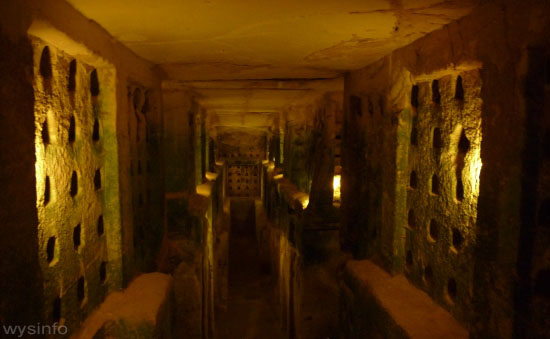
The habit of sacrificing was a common practice in the ancient world. At that time human sacrifice was experienced in central America, some tribes in Africa and some ancient tribes in Europe like the Germans and Kelts. In ancient Greece human sacrifice was a practice in order to appease the gods. Also in Egypt and Mesopotamia this was a practice in times of crisis. For example, Meisha, King of Moav, sacrificed his son (Kings 2,3,27).
Jephthah the Gileadite, to fulfill his pledge to God, sacrificed his daughter (Judges 11,31). The story goes that Jephthah pledged that, if he succeeded in his battle against his enemies, he would sacrifice the first to come out of his home to receive him….this turned out to be his only child – his daughter.
The Bible condemned human sacrifice and called for a substitute, as clearly indicated in the story of Abraham and Isaac. According to the Biblical laws of sacrifices (in particular Leviticus (Vaikra) 1-16), it is imperative that sacrifice should only be of small cattle, goats and sheep or of a pure fowl\bird.
Pigeons fit this last category. Plus which, they had an advantage over the other options because they were easy to breed. Therefore they fulfilled at least two basic needs: they served as a source of food and as an object acceptable for sacrifice. As a result a flourishing industry developed for cultivating pigeons.
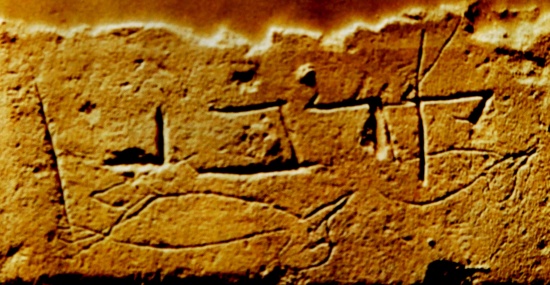
In the beginning they were bred in small dove cotes, and with time they were cultivated in larger structures called columbarium.
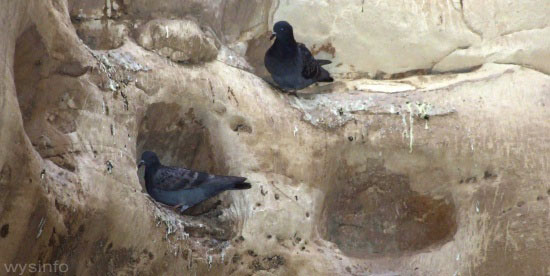
Hundreds of ancient columbaria have been found in Israel, a few dozens of them in and around the city of Jerusalem. [See my blog below about Biet Lehi, or the house of Lehi in Jerusalem] Most of them were built in man-made caves. The others were built above the ground in the form of towers. These were found in the City of David, Jericho, Masada, Herodium and in other cities in Israel, dating back to the Hellenistic and early Roman periods.
Most of those that were built above the ground did not survive. Some that were created under the ground remained in good shape. A number of them, found close to Beit Govrin, south-west of Jerusalem, are shown in the pictures in this page.
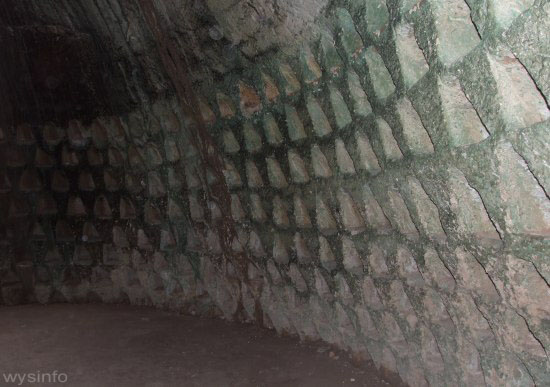
The relative softness of the limestone that exists in the foot hills of Jerusalem helped to create the underground structures. These were created in round shapes, square shapes and/or complexes that included several rooms and halls with connections among them.
In the walls of these rooms, hundreds of niches were dug, each big enough to allow a mother pigeon to lay 2 eggs and to grow her baby squabs.
These complexes contained sometimes thousand of pigeons. Their droppings were used to fertilize the agricultural land around – thereby introducing an additional benefit to the industry.
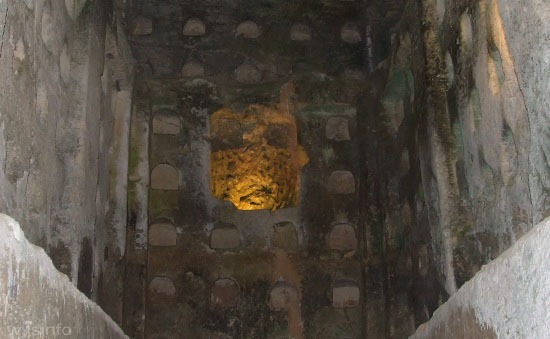
Columbarium can also be found in many places around the world: England, Scotland, Wales, France, central Europe, Italy etc. It is possible that the Romans introduced the practice into the conquered areas. In medieval times, raising pigeons was often considered the right of nobility and, as a result, you can find dovecotes that are still standing beside their castles.
In France a dovecote (colombier) was usually built out of rocks or from brick or cob. You can find dovecotes in France that could accommodate over 2,000 pigeons. The pigeons were encouraged to breed in clay basins or sometimes braided wicker baskets.
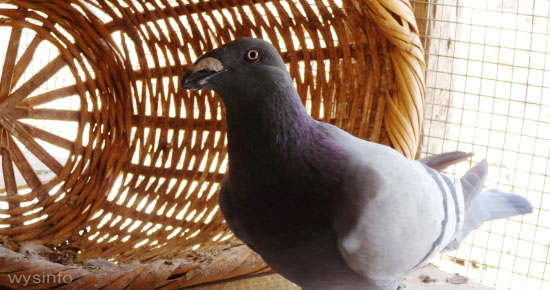

The breeding of pigeons quickly became a pastime that resulted in unusual varieties of fancy pigeons that were (and still are) cultivated for showcasing, sports etc. At the same time, a loss of control in this breeding process resulted in the widespread propagation of cultivated pigeons -turned wild – around cities and towns ….so much so that the descendants are now enough of a nuisance to warrant the emergence of an industry dedicated to get rid of them.
- Photo from Biblical Archaeology Review, May/June 2009 – “This Place is for the Birds”, Author: Boaz Zissu. The Biblical Archaeology Society.
- Photo by Erich Lessing, from Biblical Archaeology Review, May/June 2009 – “This Place is for the Birds”, Author: Boaz Zissu. The Biblical Archaeology Society. https://wysinfo.com/doves-and-pigeons-in-history http://www.birdsource.org/Features/Doves/index.html
Biet Lehi
See my blog about the city of Lehi just south of Jerusalem called “Biet Lehi” which means “house of Lehi”. They have found this same type of Dove cave: Picture below. https://www.bofm.blog/house-of-lehi-found-near-jerusalem-2/

In 1961 Israeli soldiers unearthed a cave that had inscriptions and drawings including the oldest known Hebrew writing of the word “Jerusalem” dated to approximately 600 B.C. by Dr. Frank Cross Moore, Jr. of Harvard University.
“I am Jehovah thy Lord. I will accept the cities of Judah and I will redeem Jerusalem”
“Absolve us oh merciful God. Absolve us oh Jehovah”
The drawings depicted men who appeared to be fleeing and two ships.
While investigating the cave, Dr. Joseph Ginat of The University of Haifa met a Bedouin who told him about the remains of an ancient oak tree about 1/4 of a mile away where, according to Bedouin legends and tradition, a prophet named Lehi blessed and judged the people of both Ishmael and Judah. The Bedouin told Dr. Ginat that Lehi had lived many years before Muhammad and that Arab people had built a wall of large rocks around the remains of the tree to protect it as a sacred spot, long known by arab inhabitants as “Beit Lehi”, meaning “Home of Lehi.”
Dr. Ginat shared this information with W. Cleon Skousen whom he had met while studying anthropology at University of Utah and teaching at Brigham Young University from 1970 through 1975. Blog here





